Architecture is often described as a dialogue between science and art, but few figures embody that balance as gracefully as Tadao Ando. A self-taught visionary—and, remarkably, a former professional boxer—Ando has risen to become one of the most celebrated names in contemporary design. His signature? A poetic command of concrete, light, and natural elements that transforms structures into spaces of both serenity and strength.
Yet Ando’s architecture is admired for more than its technical brilliance. His work bridges modern minimalism with cultural heritage, drawing deeply from Japanese tradition while simultaneously pushing design into the future. Themes of silence, nature, and spirituality run through his projects, turning buildings into experiences rather than just structures. It is this unique fusion that earned him the prestigious Pritzker Prize.
From private residences to world-class museums and sacred spaces, Tadao Ando’s creations stand as timeless monuments of modern design. Below, we explore ten of his most inspiring works—masterpieces that reflect not only his genius but also his enduring influence on global architecture.
Here are 10 iconic designs by architect Tadao Ando that have defined modern architecture…
#1. Azuma House, Osaka (1975–1976)
Also known as the Sumiyoshi Row House, this early project by Tadao Ando reimagined what urban living could be. Specifically, divided into three sections, the home is organized around a central open-air courtyard that becomes the heart of daily life. Moreover, with its stark concrete walls and complete absence of street-facing windows, the design turns inward, inviting residents to find peace and light within rather than beyond.
Minimalist, introspective, and deeply attuned to nature, Azuma House remains one of Ando’s most celebrated works. It’s an architectural statement that established his philosophy of serenity through simplicity.
#2. Koshino House, Ashiya (1980–1981, 1983–1984)
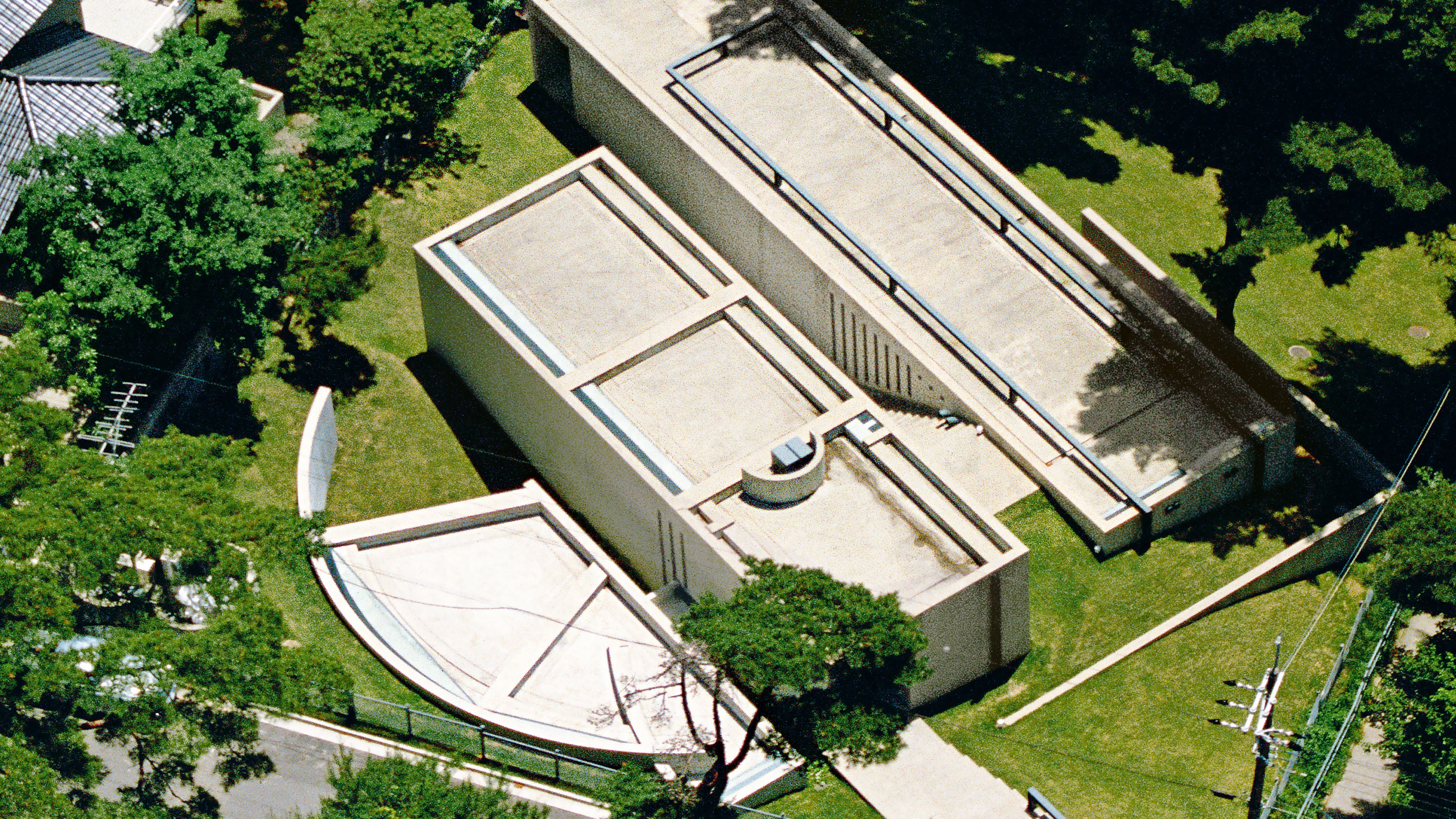
Koshino House sits gracefully within a sloping landscape, exemplifying Ando’s talent for harmonizing architecture with nature. The design features two parallel concrete volumes connected by an underground passage, while a later addition introduces a curved studio space that gently contrasts the rigid geometry. Carefully positioned openings allow natural light to animate walls and floors, transforming the interiors into a dynamic, living “architectural landscape.”
#3. Rokko Housing Complex, Kobe (1981–1998)
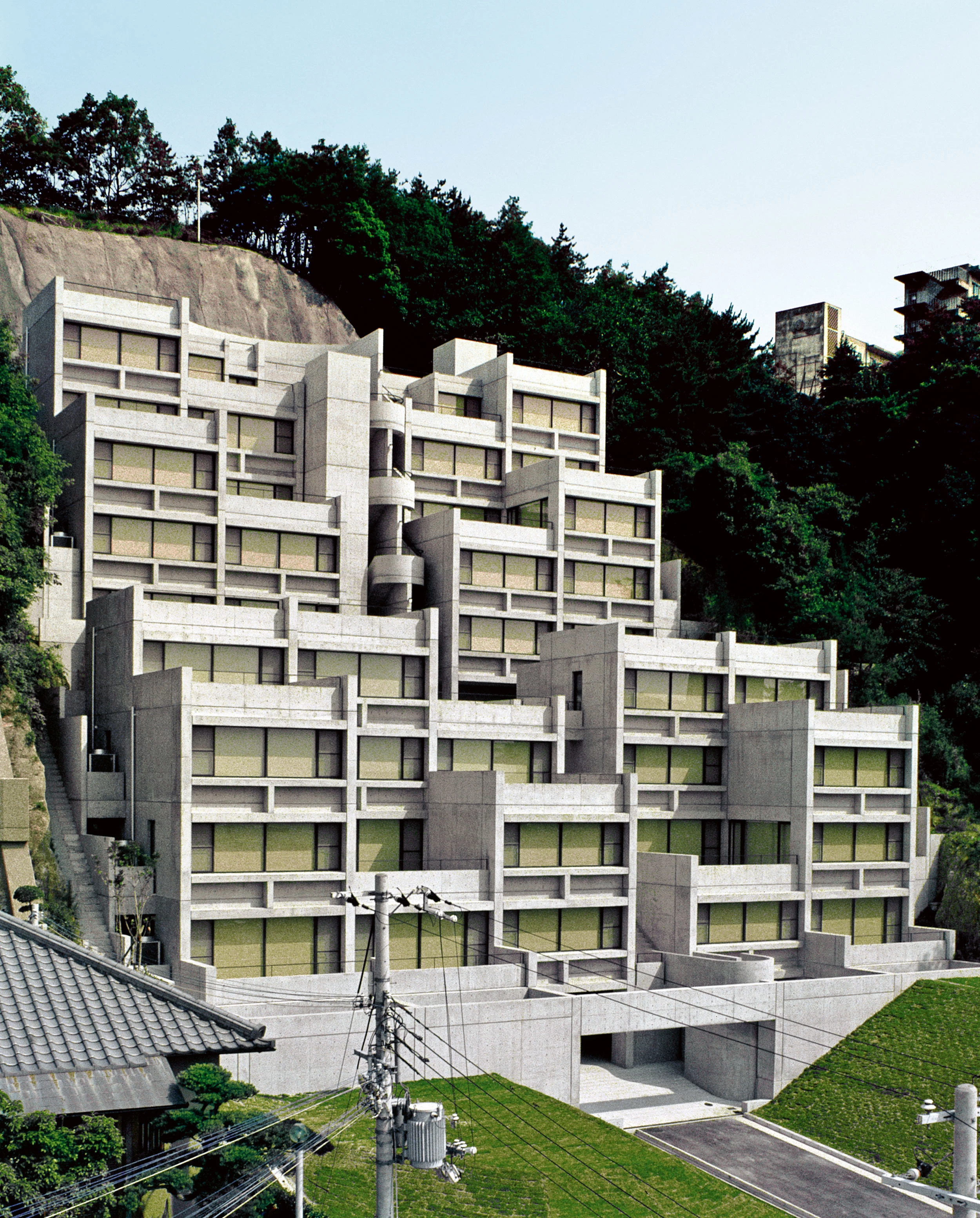
Rokko Housing perches dramatically on a steep mountainside, showcasing Ando’s visionary approach to challenging terrain. The stepped terraces are more than just residences. They incorporate communal gardens and shared spaces that cultivate a sense of community. Through thoughtful design, Ando transforms a difficult landscape into a vibrant neighborhood, proving that architecture can elevate both environment and everyday life.
#4. Church of Light, Osaka (1989)

Church of Light stands as one of Tadao Ando’s most iconic masterpieces, epitomizing his command of minimalist design. A modest concrete cube is dramatically pierced by a cruciform cut, allowing natural light to flood the interior and infuse the space with a serene, almost spiritual glow. This interplay of light and shadow creates a profound dialogue between material and spirit.
#5. Museum of Wood, Hyogo (1994)
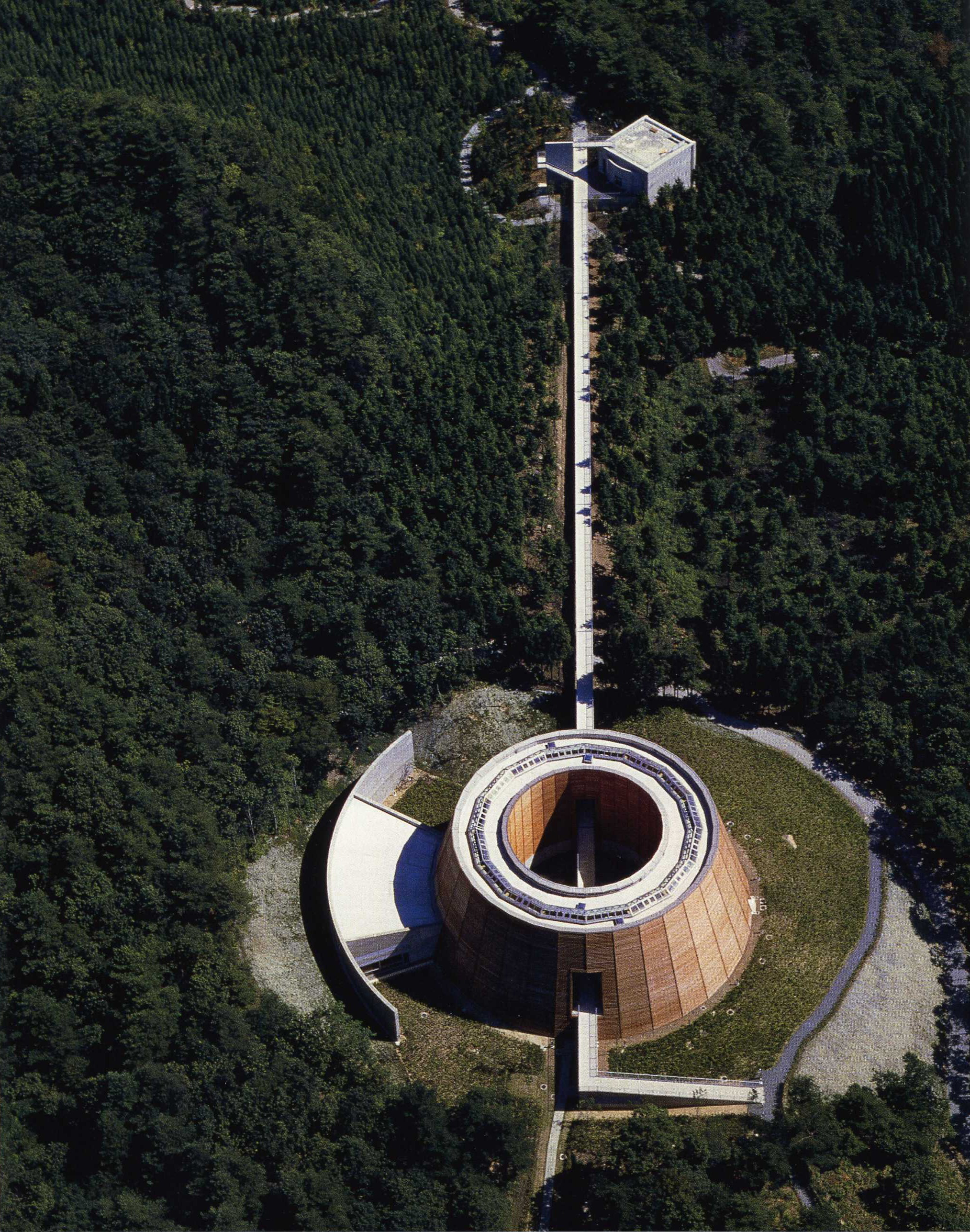
This innovative museum honors humanity’s connection with nature, seamlessly blending timber, water, and light to craft a contemplative atmosphere. The museum’s truncated cone design sits surrounded by a reflective pond and is approached via a suspended bridge, heightening the visitor’s sensory experience. This project exemplifies how Tadao Ando transforms ordinary materials into extraordinary, immersive environments.
#6. Suntory Museum, Osaka (1994)

Suntory Museum of Art exemplifies Ando’s fascination with curved forms and his mastery of integrating architecture with public space. The complex, which houses galleries, shops, and a theater, emphasizes the journey as much as the destination. It features ramps, walkways, and open plazas that guide visitors through a thoughtful spatial narrative. The project also reinforces a recurring Tadao Ando theme: the delicate dialogue between architecture, water, and human life.
#7. Sayamaike Historical Museum, Osaka (2001)
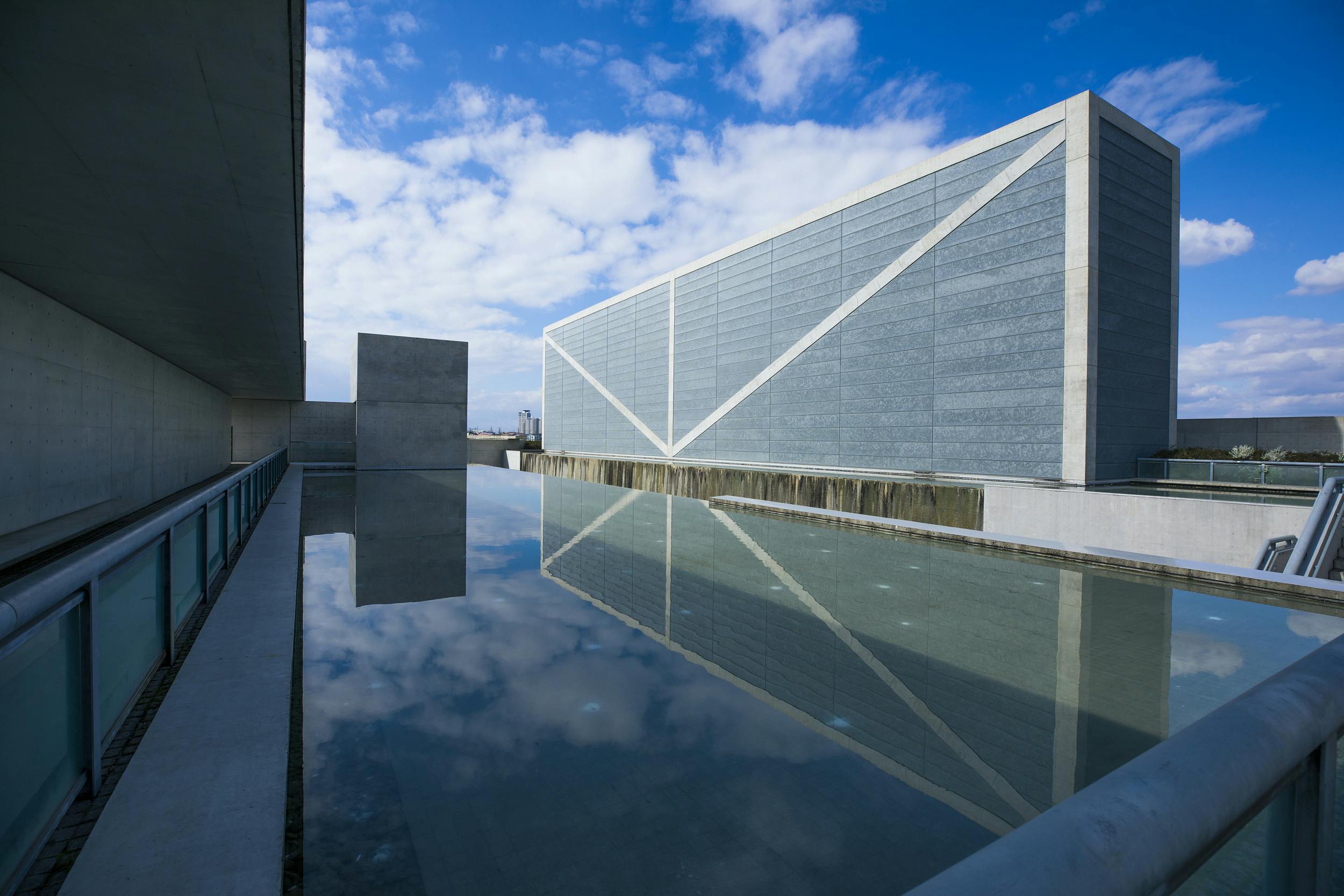
Chichu Art Museum sits gracefully near an ancient reservoir, celebrating water as both a life source and a cultural symbol. Granite walls, cascading waterfalls, and reflective pools make the structure feel seamlessly integrated with its surroundings. In this project, the renowned architect showcases how architecture can honor memory and history while embracing contemporary form.
#8. Pulitzer Arts Foundation, Missouri (2001, expanded 2015)
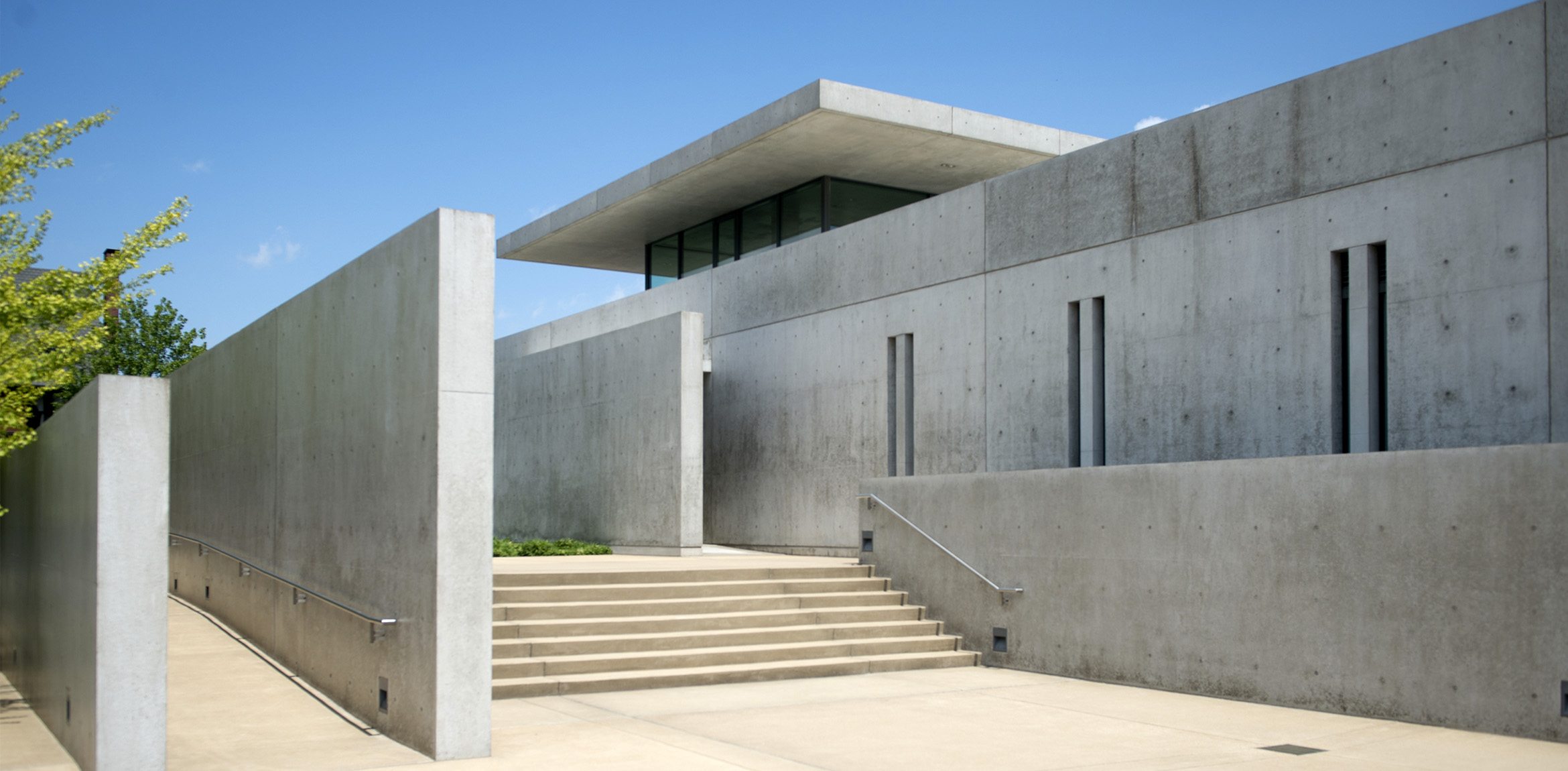
Pulitzer Arts Foundation in St. Louis, one of Ando’s celebrated works outside Japan, highlights his mastery of natural light. The galleries are organized around a tranquil water courtyard, creating contemplative spaces that echo the art they house. A later expansion further reinforced Ando’s vision, balancing the solidity of concrete with a thoughtful openness to the surrounding environment.
#9. Water Temple, Hyogo (1991)
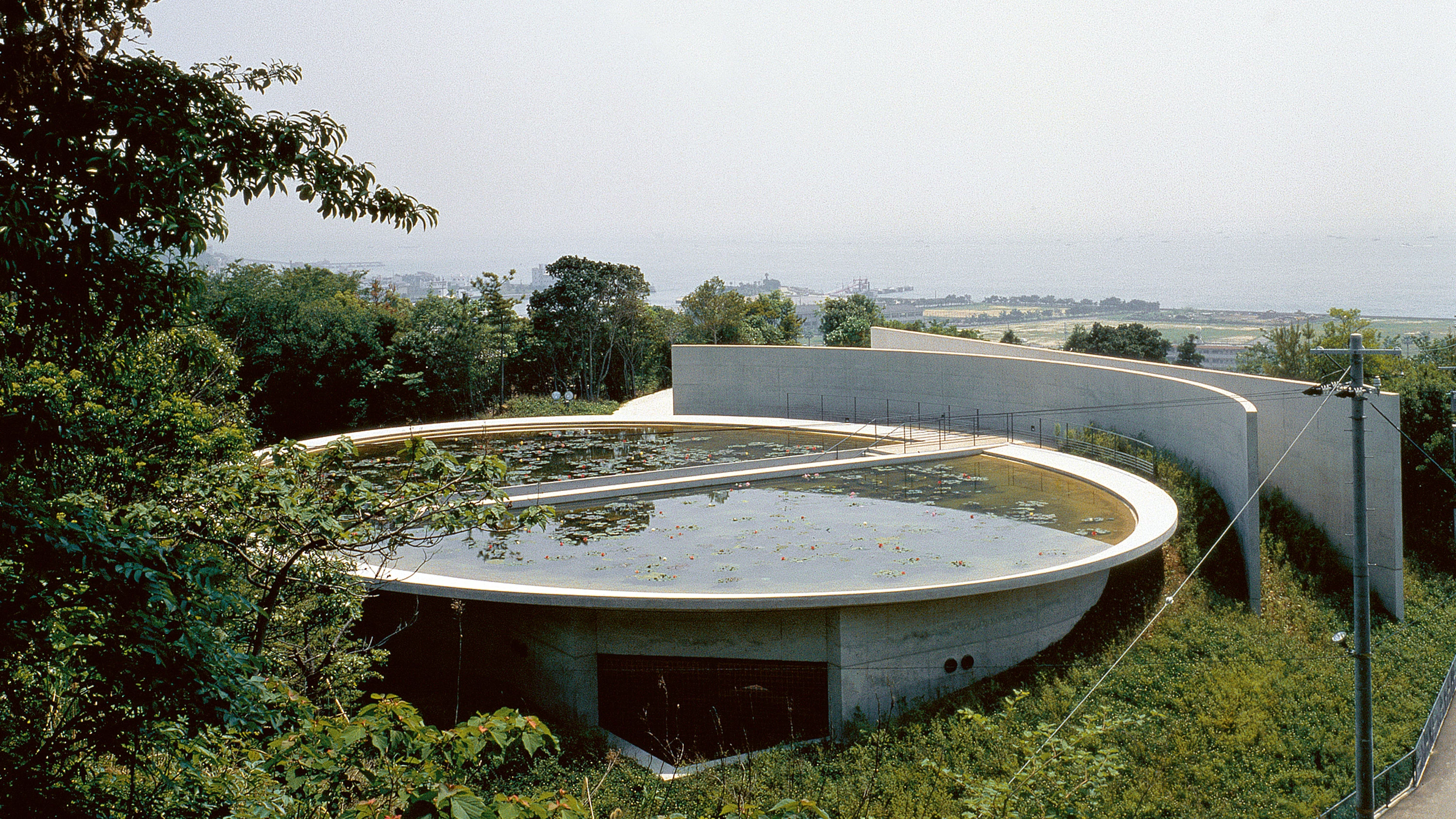
Perhaps one of Tadao Ando’s most spiritual creations, the Water Temple guides visitors on a symbolic journey. A serene lotus pond conceals the entrance, leading to a staircase that descends into the sanctuary. Inside, a striking red interior contrasts with the tranquil water above, capturing the duality of silence and vibrancy that is emblematic of Ando’s architectural philosophy.
#10. Awaji Yumebutai, Hyogo (2000)

Awaji Yumebutai, built on land once scarred by industrial excavation, stands as a testament to renewal. Moreover, the sprawling complex integrates a conference center, hotel, greenhouse, and outdoor spaces seamlessly with the sloping terrain. Additionally, gardens, terraces, and open-air theaters transform the site into a harmonious experience, exemplifying Tadao Ando’s vision of architecture as an “environmental creation.”
The Timelessness of Tadao Ando’s Designs
Architect Tadao Ando’s work continues to inspire awe, consistently striking a remarkable balance between simplicity and depth. Whether crafting a humble residence, a sacred sanctuary, or a monumental museum, his architecture transcends mere structure to touch the human spirit. By harmoniously combining concrete with light, water, and natural elements, Ando achieves something rare: timelessness. These ten masterpieces offer only a glimpse into a body of work that has fundamentally reshaped the landscape of modern architecture.
Featured image: Kazuhiro Nogi/Getty Images
For the latest in fashion, lifestyle, and culture, follow us on Instagram @StyleRave_
—Read Also
